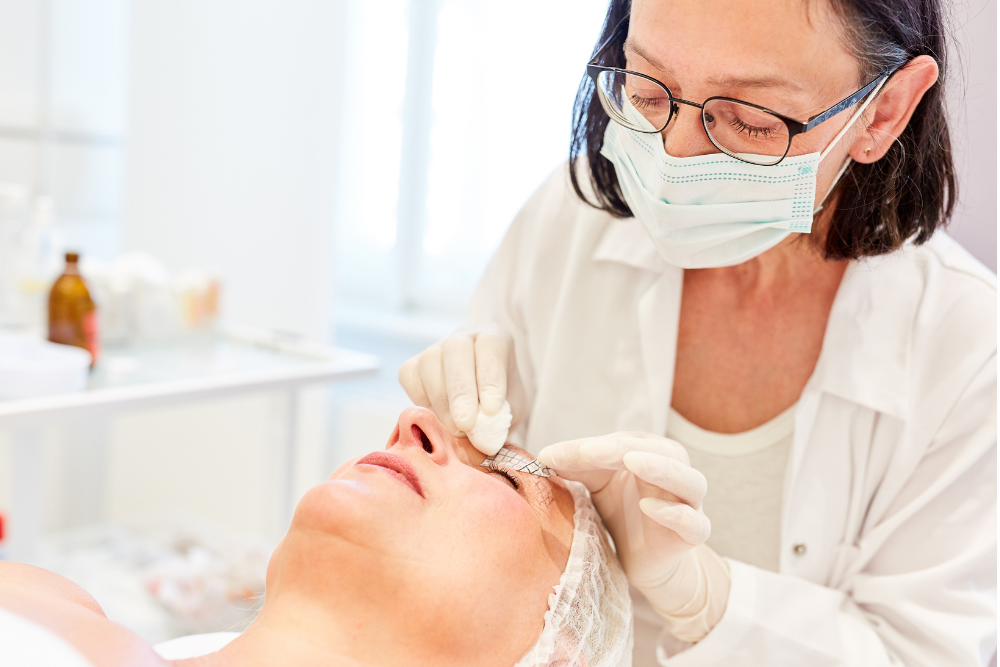If feelings of embarrassment, anxiety, and social withdrawal due to hair loss have you researching treatments, you’re in the right place. Many people find that their thinning hair or bald spots make them look older than they feel, which can further make the negative emotions of hair loss even worse.
Thankfully, you have options for hair loss transplants in DC to restore your self-esteem and rev up your confidence!
What Causes of Hair Loss Can a Transplant Treat?
Hair transplants are particularly effective for certain types of hair loss, particularly those caused by genetic factors including androgenetic alopecia. Also known as male / female pattern baldness, androgenetic alopecia is the leading cause of hair loss in men and one of the top in women.
In addition to genetic causes, a hair transplant can address hair loss due to trauma, such as scars from accidents or burns, certain types of alopecia, including alopecia areata and traction alopecia caused by prolonged tension on the hair, hormone imbalances, and thyroid disease.
What Is the Difference Between FUE and FUT Transplants?
When considering a hair transplant, understanding the difference between follicular unit extraction (FUE) and follicular unit transplantation (FUT) is essential.
FUE involves extracting individual hair follicular units containing one to four hairs from a donor area, usually the back of the scalp. These are then transplanted to the thinning or bald areas. This method is minimally invasive, leaving tiny scars that are nearly invisible. It boasts a shorter recovery time.
For FUT, also known as the strip method, a strip of scalp tissue is removed, after which it’s dissected into individual follicular units. These units are then transplanted in the recipient area. While FUT can yield a larger number of grafts at once, it has a longer recovery period and can leave scars.
The choice between FUE and FUT depends on variables such as your hair loss pattern and number of grafts needed, as well as your personal preference.
How Many Grafts Do I Need?
Determining the number of hair grafts you personally need depends on your desired results and the extent of your hair loss, as well as other factors. During the consultation process, your transplant surgeon will assess your hair loss pattern and aesthetic goals to develop a tailored treatment plan.
Typically, patients with mild to moderate hair loss might need between 600 and 2,000 grafts, while those with more extensive hair loss might require 3,000 to 5,000 or more grafts.
Who’s a Good Hair Transplant Candidate?
To be considered, you should have sufficient donor hair, such as from the back or sides of the head, which can be transplanted to the thinning or bald areas. You should also be in good health and have realistic expectations about the results.
Age can also play a role in eligibility, as it’s typically recommended to wait until you’re at least 30. This is to be sure that your hair loss pattern is defined.
Who Isn’t an Ideal Candidate?
Patients with certain medical conditions including heart disease, bleeding disorders, or kidney or liver failure may not be suitable candidates for surgery.
Additionally, individuals with certain scalp conditions, such as severe scarring or infections, might not be suitable for a hair transplant until these conditions are treated.
You’re likely to not qualify if you are under the age of 25, due to the age recommendation above. If you have certain types of hair loss, such as diffuse alopecia, you are not a good candidate.
Are There Alternatives if I Don’t Qualify for a Hair Transplant?
Yes, there are some great options, including the cutting-edge Alma TED (transepidermal delivery) treatment. Used alone or combined with platelet-rich plasma (PRP), Alma TED stimulates natural hair growth. With options like these, no surgery is required, so there is no downtime necessary, no incisions necessary, and no risk of scarring.
Regarding the age factor, Alma TED with PRP can generally be performed on individuals of various ages, as long as they are in good health. However, the effectiveness of these hair loss solutions may vary depending on the individual’s specific condition and the underlying cause of hair loss.
How Can I Make Sure I Get Natural Looking Results?
The surgeon you choose should be experienced and skilled, and they should meticulously plan the placement of grafts to mimic natural hair growth patterns, considering factors such as hairline design, angle, and density.
Advanced techniques, such as FUE, can also contribute to an outcome that appears more natural as well.
Post-operative care is equally important; following the surgeon’s instructions for care and maintenance can help ensure the best possible effects.
Revolutionary Hair Loss Treatments Including Hair Transplants in DC Are Just a Phone Call Away!
Located within The Center for Cosmetic Surgery, The Washington Hair Institute stands out as a premier destination for revolutionary hair loss treatments. The institute is renowned for its expertise in both FUE and FUT procedures, offering personalized treatment plans tailored to each patient’s unique needs.
Our team delivers natural looking results through detailed planning and advanced techniques. The institute’s state-of-the-art facilities and commitment to patient care ensure a comfortable and supportive experience from consultation through recovery.
With a focus on innovation and excellence, The Washington Hair Institute provides patients with the confidence that they will receive the highest level of care for their hair restoration journey.
Call us now at 202-785-3175 to book your consultation to learn more about the best method for you to restore a full head of amazing hair again!





